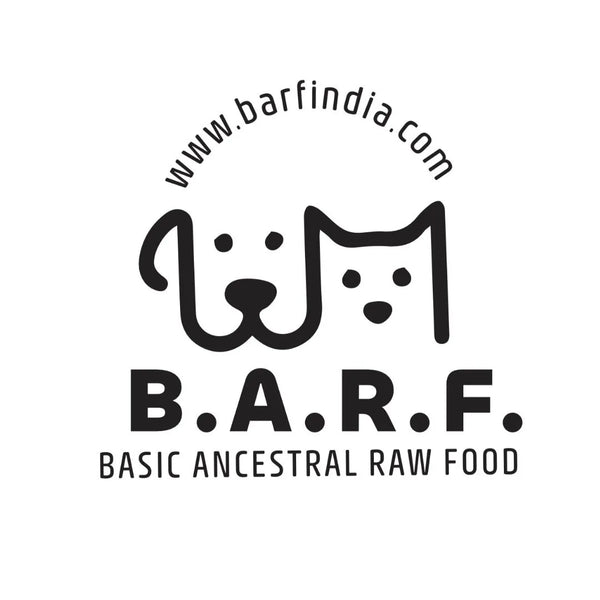Raw for Maximum Nutrition
Made in our own Kitchens
Human grade products
Promoting Joint Health for Dogs and Supporting Dogs with Arthritis
WRITTEN BY NIVEDITA FERNANDES
02/10/2025
5 MIN READ
TABLE OF CONTENTS
- Supporting Dogs with Arthritis
- Why Joint Health for Dogs Matters
Which Dogs Are More Likely to Develop Joint Problems - Recognizing Signs of Joint Pain
- Diagnosing Joint Issues in Dogs
- Strategies to Support Arthritis in Dogs
- Adjustments to Help Dogs with Arthritis
- When to See the Veterinarian
- Variety of Proteins for Balanced Nutrition
- Final Thoughts
If you’ve been searching for a healthier, fresher alternative to processed kibble, BARF India’s cooked cat food is the answer. Made from human-grade, preservative-free ingredients, it’s the closest you can get to homemade cat food — without the effort. Our sampler pack is perfect for finicky cats, giving them a chance to explore every recipe and find their favourite.
Supporting Dogs with Arthritis to Stay Active & Comfortable
Joint health for dogs is a topic of growing importance, especially as more dogs live longer lives and may experience arthritis or degenerative joint conditions. As a conscientious dog owner, understanding how to support dogs with arthritis and maintain healthy joints can make a profound difference in their quality of life. In this blog, we’ll explore risk factors, signs of joint problems, dietary and lifestyle strategies, supplements and medical options, and home care tips to help your dog move more comfortably.
👉 BARF India raw and cooked dog food is formulated to provide all these nutrients without fillers, preservatives, or artificial additives.


Why Joint Health for Dogs Matters
Joints are the hinge points in your dog’s skeleton, enabling movement, flexibility, and shock absorption. Over time, cartilage can wear down, inflammation can set in, and joint pain can limit mobility. When joint health deteriorates, dogs—particularly aging ones—can suffer from arthritis (especially osteoarthritis), reduced activity, stiffness, and discomfort.
Focusing on joint health for dogs is more than alleviating symptoms—it’s about prevention, slowing progression, and improving daily comfort, especially for dogs with arthritis.
Risk Factors: Which Dogs Are More Likely to Develop Joint Problems
While any dog can develop arthritis, certain factors tend to increase risk:
- Breed / Genetics:
Large breeds (e.g. German Shepherds, Labradors, Great Danes), or breeds predisposed to hip/elbow dysplasia or joint developmental problems, tend to have higher risk.
- Age:
Degenerative joint disease is more common in middle-aged and senior dogs.
- Weight / Obesity:
Carrying extra weight increases stress on joints and contributes to inflammation.
- Injury:
Past joint injuries (ligament tears, fractures) can accelerate cartilage wear.
- Conformation / Orthopedic Conditions:
Conditions like hip dysplasia, elbow dysplasia, luxating patellas, and osteochondritis dissecans (OCD) predispose joints to degenerative change.
- Poor Nutrition / Inadequate Exercise:
A lack of proper muscle support (due to poor diet or inactivity) weakens joints.Understanding these risk factors helps you take preventative or early action.

Recognizing Signs of Joint Pain and Arthritis in Dogs
Dogs are masters at hiding discomfort. The signs of joint pain or arthritis may appear gradually and subtly.
Watch out for:
Mobility changes
- Reluctance or refusal to jump up or down
- Difficulty climbing stairs
- Trouble rising from a lying position
- Stiffness, especially after resting or first thing in the morning
Behavioral shifts
- Less interest in walks, play, or interacting
- Irritability, snapping when touched around joints
- Changes in temperament
- Gait changes / limping (though not always obvious)
- Muscle loss around affected joints (due to disuse)
- Changes in posture or shifting weight to non-affected limbs
If you notice any of these signs, it’s wise to consult your veterinarian for a proper diagnosis and to rule out other causes like soft tissue injury or neurologic disease.
Diagnosing Joint Issues in Dogs
Veterinarians assess joint issues by:
Physical exam : feeling joint range of motion, swelling, pain response.
Radiographs (X-rays): to evaluate joint space narrowing, bone spurs (osteophytes), subchondral changes.
Advanced imaging / diagnostics (if needed): CT, MRI, joint fluid analysis.Lab tests, to rule out systemic causes that may mimic joint disease.
A definitive diagnosis helps tailor a management plan.
Strategies to Support Joint Health in Dogs & Help Dogs with Arthritis
Effective management often involves combining multiple approaches.
Here are key strategies:
1. Weight control and body condition:
Maintaining an ideal weight is one of the most powerful ways to reduce joint stress. Even 10–15% weight loss can markedly improve mobility in dogs with arthritis.
2. Controlled, safe exercise: Though counterintuitive, moderate low-impact activity (such as controlled leash walks, swimming, underwater treadmill, gentle range-of-motion exercises) helps maintain muscle mass, joint flexibility, and joint lubrication. Avoid sudden bursts of running or jumping that can worsen joint wear.
3. Joint-supporting supplements: Many veterinarians recommend supplements to support cartilage health, reduce inflammation, and cushion joints. Common ones include:
- Glucosamine: A building block for cartilage.
- Chondroitin-helps inhibit cartilage breakdown
- Omega-3 fatty acids (EPA & DHA) — potent anti-inflammatory effect
- Turmeric / Curcumin — natural anti-inflammatory properties.
- Green-lipped mussel extract, MSM, collagen-type supplements- sometimes used adjunctively
Note: Always consult your vet before adding supplements, especially if your dog is on other medications.
4. Prescription medications & pain management: For moderate to severe arthritis, veterinarians may prescribe:
- NSAIDs (Non-Steroidal Anti-Inflammatory Drugs)-to reduce pain and inflammation
- Pain modulators / neuropathic pain drugs.
- Joint disease modifying agents (e.g. disease-modifying osteoarthritis drugs, or DMODs)
- Regenerative therapies (stem cell therapy, platelet-rich plasma) - when suitable.
- Regular follow-up is essential to monitor side effects and adjust therapy.
5. Diet tailored to joint health:
Feeding a nutrient-dense, balanced diet rich in beneficial fats and antioxidants supports overall cellular health, including joints. Some dog foods are formulated with extra joint support (e.g. enriched with omega-3s, glucosamine, or joint supplements).
6. Physical therapy & rehabilitation:
Targeted therapies can make a big difference:
- Passive stretching, joint mobilization.
- Hydrotherapy or swimming
- Underwater treadmill
- Laser therapy, massage, acupuncture
- Controlled “physical rehab” programs designed by certified canine rehab specialists
Home Environment Adjustments to Help Dogs with Arthritis
Small changes at home can add up to meaningful comfort:
- Provide orthopedic or memory-foam bedding to cushion joints
- Use ramps or pet stairs to access sofas, beds, or cars
- Raise food & water bowls so the dog doesn't need to crouch
- Add non-slip mats or rugs on slick floors
- Keep nails trimmed (long nails stress joints)
- Avoid slippery surfaces
- Place “resting zones” on each floor level if your home has stairs

When to See the Veterinarian
If your dog exhibits any signs of joint discomfort (reluctance to move, stiffness, changes in behavior) or you suspect worsening arthritis, it’s best to seek veterinary evaluation early. Early intervention can slow progression, reduce pain, and preserve mobility.
Regular checkups, weight monitoring, and open communication with your vet are key to long-term joint care.
Rotate proteins to prevent boredom and ensure balanced nutrition for joint pain in dogs.

8. Variety of Proteins for Balanced Nutrition
Why it helps:
Feeding different proteins ensures that your dog gets a wider nutrient spectrum. This helps cover gaps in vitamins, minerals, and amino acids, and keeps meals exciting. Variety also reduces the risk of food sensitivities, which can worsen inflammation.
Where to find it:
Rotating between poultry, red meat, fish, and exotic proteins keeps the diet balanced and joint-supportive.
👉 Example: BARF India Multi-Protein Raw Packs.
LEARN MORE ABOUT INDIA'S No.1 FRESH DOG FOOD
FRESH DOG FOODFinal Thoughts
Caring for joint health in dogs, especially dogs with arthritis, calls for an integrated, proactive approach. By managing weight, using safe exercise, employing joint-targeted supplements and medications as needed, and optimizing the home environment, you can help your dog stay more comfortable, mobile, and happy for as long as possible.
Thus, a raw diet tailored for joint support can help attenuate the typical joint decline trajectory.


